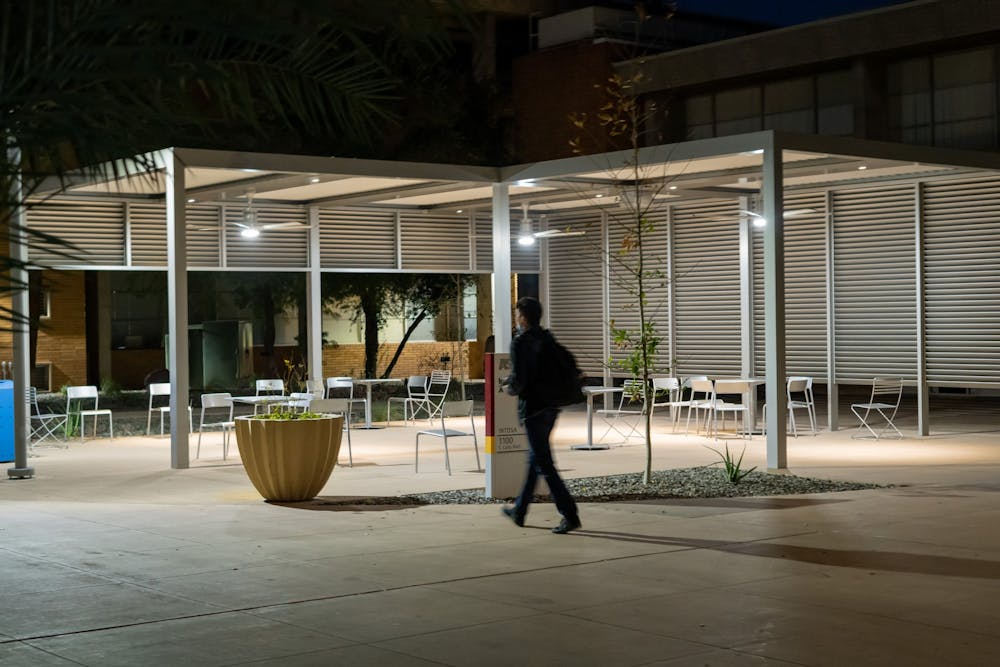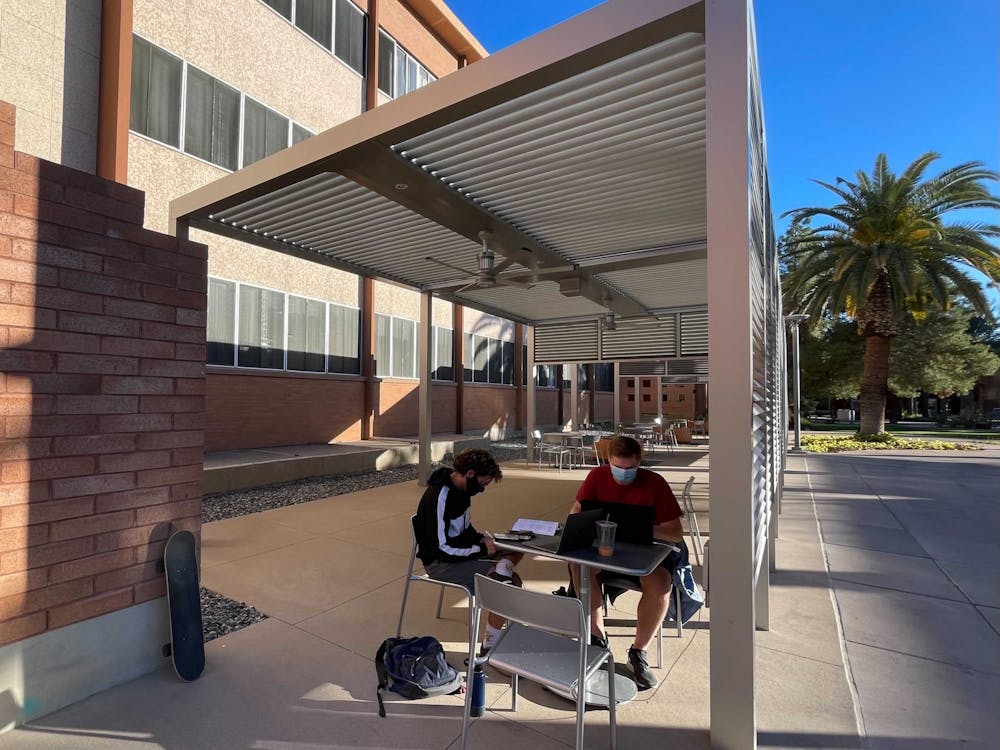Since the start of the Spring 2021 semester, ASU has encouraged professors and students to return to in-person instruction, but many are hesitant due to fears of contracting or spreading COVID-19.
In an effort to ease the community's concerns about attending in-person classes, the University built seven outdoor learning structures across its four campuses. There are four structures on the Tempe campus and one structure each on the Downtown Phoenix, West and Polytechnic campuses.
While the virtual learning environment satisfies most academic requirements, outdoor learning spaces provide an in-person experience for students who feel isolated from their peers on Zoom, and in a location where COVID-19 is less likely to spread, according to the Centers for Disease Control and Prevention.
While the official number of professors using the structures to teach is unconfirmed, professors Justine Cheung, senior program coordinator at the School of Social Work, and Cynthia Lietz, vice dean and professor at the Watts College of Public Service and Community Solutions, are among those known to use them for in-person instruction.
This semester, Cheung and Lietz will teach a course called 'Relationships...It's Complicated' at the outdoor structure in Tempe located on Palm Walk outside the Physical Sciences C building. The structure they are using is a covered patio area with tables and ceiling fans.
The students enrolled in the class are also a part of the Bridging Success program, a program that supports students who were once in foster care.
'Relationships...It's Complicated' aims to teach these students about healthy relationships and helps to connect them with others with similar experiences, Cheung wrote in an email. The official name of the topic-focused course is Bridging Success.
"If you think about our Bridging Success students, some of whom came to campus without a lot of social support, not a lot of family or friendships, but even more so than our typical ASU students, they're at a higher likelihood of being isolated," Lietz said. "They're not talking to anybody except for sitting on Zoom for class and, at some point, that impacts all of us as human beings and it impacts our mental health."
In their evaluation of which learning mode they would use to teach the course — virtual, in-person or a combination of the two using ASU Sync — Cheung and Lietz decided their students' ability to build these essential relationships would thrive in an in-person environment.
"We're making it work, but it is not the same," Lietz said of virtual instruction. "ASU is definitely worried about our students having connection with one another and the virtual connection is great, but there is something uniquely special about seeing a body and being in a physical proximity as you're trying to build a sense of community."
Cheung and Lietz and their handful of students were supposed to meet for the first time Friday, but rain and wind prevented them from being able to use the outdoor structure.
Because of the small class size, they were easily moved to an indoor classroom and Cheung said they had a great first meeting, despite the weather disruption.
"You could feel it palpable in the room when we were all together," Cheung said. "A couple of my students were like, 'Oh, my gosh, people!' They were so happy to have that connection and energy."
It seemed the students were excited, Cheung said, because a student from every campus attended Friday's class.
"That is how valuable this class was to them," Cheung said. "They were willing on a rainy Friday afternoon to come from whatever campus they were on, get a shuttle and figure out the shuttle schedule, but they did it because they wanted it that much."
While they have not yet had the opportunity to teach at the outdoor structure, Cheung and Lietz have visited it and say they feel very safe returning to in-person instruction there.
"I actually think we're safe in a classroom too, but not all students feel that way," Lietz said. "Being outside gives the additional increased safety that makes some students come who might not, otherwise."
Lietz said the reservation process was simple and encouraged other professors to use the seven structures for in-person courses, but warned them to check the weather beforehand.
This was an issue which concerned Mathias Clairis-Gauthier, a junior studying sports business who is not in a class utilizing the outdoor spaces. He was intrigued by these learning structures but wary of the potential problem areas faculty pointed out.
"It depends on the semester, I guess, but certain days I feel like most people would not want to go just melt outside in 104-degree weather when they could just do Zoom," Clairis-Gauthier said. "The concept is nice but maybe the execution would kind of fail at some point throughout the year."
Despite possible issues with execution, the spaces provide students and faculty an alternative to virtual learning which allows them to be physically present in class without being indoors.
"We need a lot of faculty to be thinking about particular groups of students who need an experience like this," Lietz said. "We're starting with the group that is most likely to need this, but they are certainly not the only students on campus who need something like this."
Reach the reporters at kkwilso5@asu.edu and idortch@asu.edu and follow @kaceywilson_ and @bellinilane on Twitter.
Like The State Press on Facebook and follow @statepress on Twitter.
Continue supporting student journalism and donate to The State Press today.





